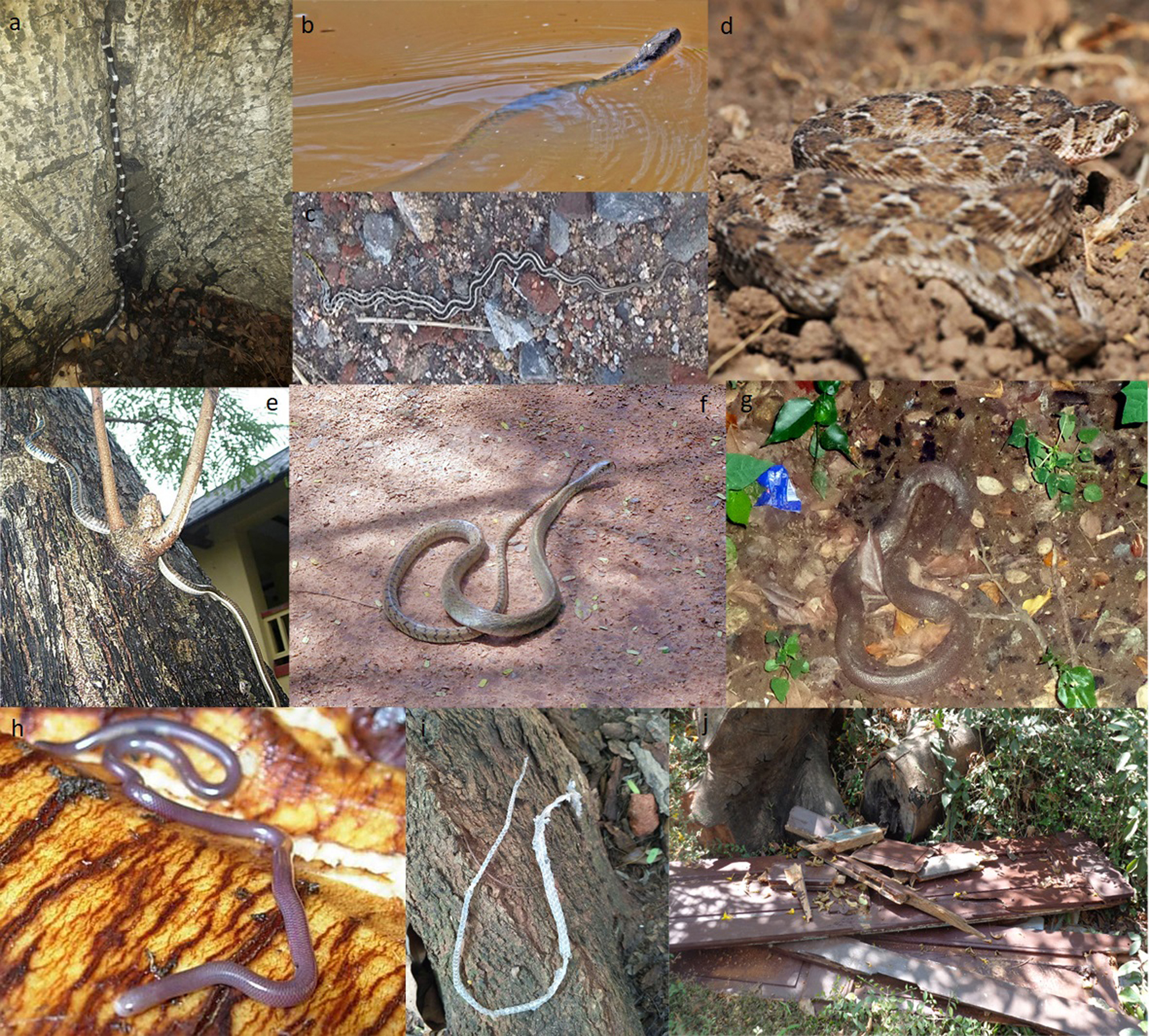Urban college campuses as safer refuge for wildlife perceived as dangerous: A case study on snakes in Madras Christian College, Chennai, India
Main Article Content
Abstract
We surveyed for snakes in a historic, old, educational institution having a large and well-vegetated campus. From a three-year survey (2016-18), spanning 288 field days, covering 1152 hours of fieldwork, a total of 132 snake sightings representing 23 species were obtained. This also includes medically important venomous snakes (Naja, Bungarus, Daboia, Echis), as well as snakes that are very rarely if ever encountered or reported from the Greater Chennai and its environs (Dryocalamus, Coelognathus, Platyceps, Eryx, Calliophis). A total of 12 kinds of microhabitats including terrestrial, semi-fossorial, arboreal and aquatic settings within three habitat types including green-spaces/vegetation, farmlands and built-up areas were found to be occupied by snakes. The fact that this study reports the highest species richness of snakes from any study in Chennai (23, vs. 19 in literature) highlights the constant long-term stability of green-spaces that enable the continued survival of snakes in this campus, surrounded by an inhospitable urban sprawl.
